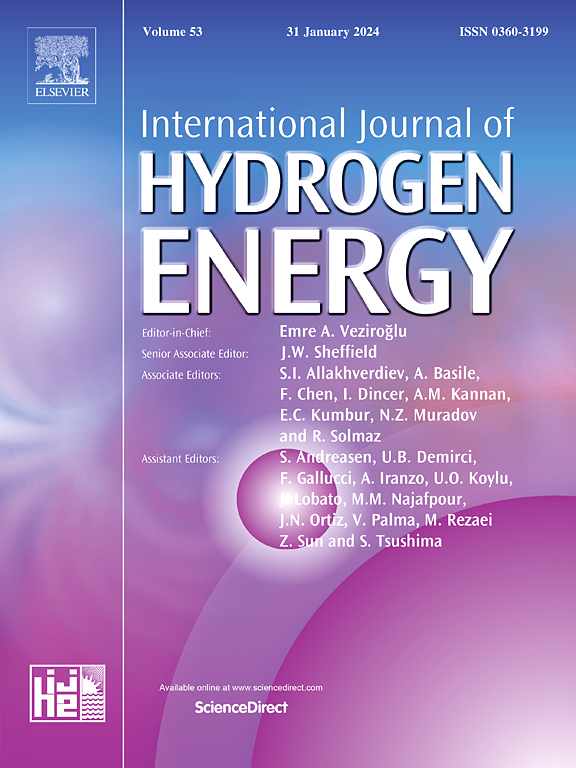具有高效甲酸氧化电催化性能的三元钯钴镍花状超薄纳米片组件
IF 8.1
2区 工程技术
Q1 CHEMISTRY, PHYSICAL
引用次数: 0
摘要
本文章由计算机程序翻译,如有差异,请以英文原文为准。

Ternary PdCoNi flower-like ultrathin nanosheet assembly with efficient electrocatalytic performance for formic acid oxidation
The development of high activity, high stability and low cost anode catalysts is a key challenge for the commercialization of direct formic acid fuel cells. The ternary Pd-based alloy catalyst has been proved to be an effective catalyst for formic acid electrooxidation. Herein, PdCoNi ternary alloy catalyst with flower-like ultrathin nanosheet structure are fabricated to serve as a robust electrocatalyst for formic acid oxidation reaction (FAOR) by a simple two-step wet chemical method. Surpassing binary PdCo Ns, PdNi Ns and Pd/C catalysts, the as-prepared PdCoNi Ns achieve extremely high catalytic activity of formic acid oxidation (3221.2 mA·mg−1Pd), with a mass activity 2.6 times that of PdCo Ns, 2.3 times that of PdNi Ns, and 6.3 times that of Pd/C. After undergoing 1000 cycles of aging tests, the peak current density of PdCoNi Ns catalyst remains at around 65.8%, far superior to Pd/C catalysts, demonstrating substantially improved stability. The improvement of electrocatalytic performance depends on the introduction of Co and Ni atoms, which can effectively modify electronic structure of Pd, increase the available active sites, accelerate charge transfer rate as well as promote mass transport by ultrathin nanosheet structure. Hence, PdCoNi Ns possesses a promising future as a fuel cell electrocatalyst.
求助全文
通过发布文献求助,成功后即可免费获取论文全文。
去求助
来源期刊

International Journal of Hydrogen Energy
工程技术-环境科学
CiteScore
13.50
自引率
25.00%
发文量
3502
审稿时长
60 days
期刊介绍:
The objective of the International Journal of Hydrogen Energy is to facilitate the exchange of new ideas, technological advancements, and research findings in the field of Hydrogen Energy among scientists and engineers worldwide. This journal showcases original research, both analytical and experimental, covering various aspects of Hydrogen Energy. These include production, storage, transmission, utilization, enabling technologies, environmental impact, economic considerations, and global perspectives on hydrogen and its carriers such as NH3, CH4, alcohols, etc.
The utilization aspect encompasses various methods such as thermochemical (combustion), photochemical, electrochemical (fuel cells), and nuclear conversion of hydrogen, hydrogen isotopes, and hydrogen carriers into thermal, mechanical, and electrical energies. The applications of these energies can be found in transportation (including aerospace), industrial, commercial, and residential sectors.
 求助内容:
求助内容: 应助结果提醒方式:
应助结果提醒方式:


